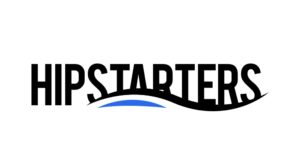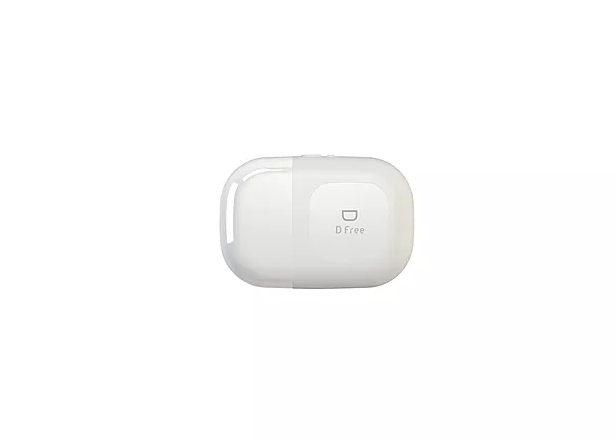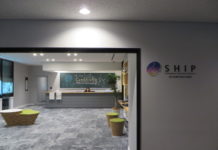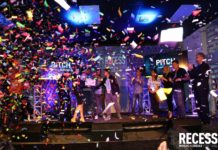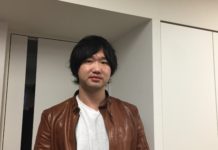
– Please tell us about your company and service.
Our product is called D-Free and comes from the words “diaper free”. It is a wearable device that uses ultrasound technology to detect any changes in your body, such as in your intestinal tract, and automatically calculates and notifies the user on when they should use the restroom. It is estimated that 500,000,000 people globally suffer from bowel incontinence. Starting in Japan, we would like focus our efforts on Senior Citizens and provide a service to help alleviate this social problem. Will we offer the service to include children and the general public in the next phase.
– What was the catalyst for creating this service?
When I was studying abroad in Berkeley, I lost control of my bowels in the middle of the street during a house move. I thought that if I had known in advance to use the restroom, I wouldn’t have put myself in that situation.
– Please tell me about your background.
I basically come from a business background. I studied business in University and later worked at a business consulting firm for 4 years. After that, I did volunteer work in the Philippines for 2 years, focusing on community development activities, and then did a year-long study abroad business course in Berkeley. Upon returning to Japan, I started my company in 2015.
– How did you receive initial funding for your business?
We reached the Series A round in July 2016 and received VC funding in Japan.
– Is your service only offered in Japan?
Currently, we are only offering our service in Japan, however due to the inquiries we have been receiving from the US, I have been taking business trips recently to the states for market research. We may plan to expand our service to US from next year. We currently have 10 employees.
– What kind of investors or companies would you like to partner up with in the future?
We conducted a trial of our product in nursing homes and concluded that using our device cuts care time by 30%. In the case of America, there is not a lot emphasis on placed on nursing care, so we are looking to shift our focus to cover rehabilitation. With that in mind, we are looking to partner with insurance companies where we could create a package service; for example, by using our device, the rehabilitation period for stroke sufferers can significantly be reduced. This could be the end goal for us, but we would need to run some trials first.
– What are your plans for expansion into other countries?
Historically, nursing care in Japan and Europe is embedded with the social systems. There are probably 5-6 countries that have this infrastructure place, while the breadth of other countries throughout the world do not. Because of this, I believe we will be able to penetrate the Japanese and European markets. Since the US and China similar healthcare markets, we will first gauge our success in the US, use that as a springboard to enter China, and then spread to other countries from there.
– When are you planning to release D-Free into the market?
We are scheduled to start sales of D-Free in December 2016. We have about 100,000 nursing homes who have showed interest in using our product.
– How does your product differ from your competitors?
Our device uses ultrasound technology and is part of a limited category of devices that are available to the general public. While similar devices can range from 500,000 to 1,000,000 yen, we are able to provide our product at a low price. Since our device has the ability to track and analyze various medical data, not limited only to bowel incontinence issues, we foresee various applications for the device over time.
– Do you participate regularly in pitch events?
Yes, actually 2 weeks ago, I participated in Japanese Pitch Night, held by the Silicon Valley Forum on October 8. I also attended an exhibition in SF called Ageing 2.0, where we had a booth to display our product.
– What is your daily schedule like?
I usually start my day around 9:30 and my schedule mostly consists of media interviews, PR activities, internal meeting and nursing home visits. At night, if I don’t have any appointment, I play Pokemon Go around Shibuya, go for massages, or workout. Usually home before or after 11, depending on the day.
– Who are your main influences?
Mitch Kitamura, the Managing Director of a VC in America called Draper Nexus, was my mentor during my internship there. He gave me a lot of valuable business advice on my startup. Apart from, Mitch-san, although I don’t know them personally, I admire Elon Musk and Shoji Ishibashi-san, the founder of Bridgestone.
– Do you have any favorite hangout spots?
I like hanging out at Five Lounge, a Karaoke bar in Shibuya. For dinner with the team, we usually go to Kin No Kura, an izakaya restaurant.
D-Free could be the next revolution in the wearable devices category. Beyond “diaper free”, we foresee the potential for the device to aid in progressing towards a “disease free” society.



